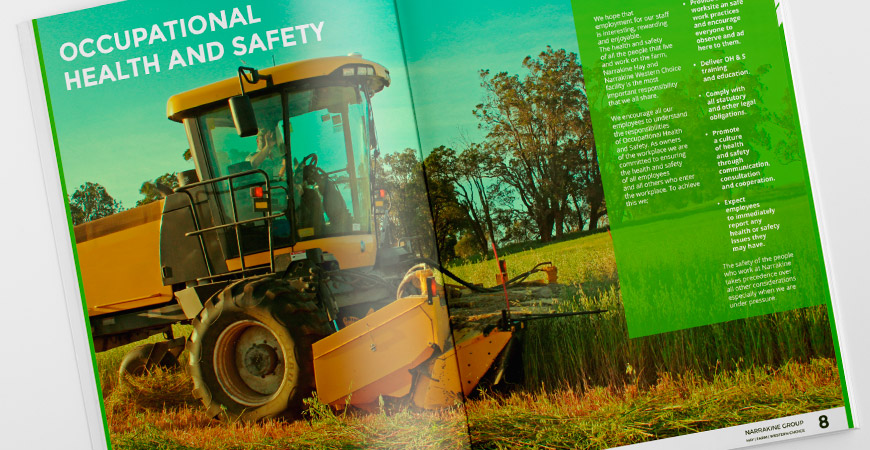Print Management

A4 PAPER:
ISO paper size 210 x 297 mm. Used for letterheads, invoices.
Accordion fold:
The paper is folded two or more times in a parallel direction. Each fold reverses the direction, similar to the bellows of an accordion. Also called a “Z” fold. Often used for items printed on one side only. Do not use an accordion fold when the item is to be inserted into an envelope by machine.
Artwork:
All original copy, including type, photos and illustrations, intended for printing.
Bleed:
Printing that extends to the edge of a sheet or page after trimming.
Body text:
The main text of work not including the headlines.
CMYK:
Abbreviation for cyan, magenta, yellow and key (black), the four process colours.
Cover:
Thick paper that protects a publication and advertises its title. Parts of covers are often described as follows: Cover 1=outside front; Cover 2=inside front; Cover 3=inside back, Cover 4=outside back.
Crop Marks:
Lines near the edges of an image indicating portions to be reproduced. Also called cut marks and tic marks.
Cutting Die:
Usually a custom ordered item to trim specific and unusual sized printing projects.
Die:
Device for cutting, scoring, stamping, embossing and debossing.
Die Cut:
To cut irregular shapes in paper or paperboard using a die.
DPI:
Considered as “dots per square inch,” a measure of output resolution in relationship to printers, imagesetters and monitors.
Dummy:
Simulation of the final product. Also called mockup.
Emboss:
To press an image into paper so it lies above the surface. Also called cameo and tool.
EPS:
Encapsulated Post Script, a known file format usually used to transfer post script information from one program to another.
Film Laminate:
Thin sheet of plastic bonded to a printed product for protection or increased gloss.
Foil Stamp:
Method of printing that releases foil from its backing when stamped with the heated die. Also called block print, hot foil stamp and stamp.
Four-colour Process Printing:
Technique of printing that uses black, magenta, cyan and yellow to simulate full-colour images. Also called colour process printing, full colour printing and process printing.
Grammage:
Basis weight of paper in grams per square meter (gsm). The unit of measurement for paper weight.
Inside:
Refers to the pages between the cover of a publication. When counting the pages, be sure to include the pages that are not numbered or are blank. Count each side of the sheet as one page.
Laminate:
A thin transparent plastic sheet (coating) applied to usually a thick stock (covers, post cards, etc.) providing protection against liquid and heavy use, and usually accents existing colour, providing a glossy (or lens) effect.
Leading:
Amount of space between lines of type.
Letterpress:
Method of printing from raised surfaces, either metal type or plates whose surfaces have been etched away from image areas. Also called block printing.
Matte Finish:
Flat (not glossy) finish on photographic paper or coated printing paper.
Metallic Paper:
Paper coated with a thin film of plastic or a pigment whose colour and gloss simulate metal.
Offset Printing:
A printing technique that transfers ink from a plate to a blanket to paper instead of directly from the plate to paper.
Perfect Bind:
To bind sheets that have been ground at the spine and are held to the cover by glue. This is also called adhesive bind, cut-back bind, glue bind, paper bind, patent bind, perfecting bind, soft bind and soft cover.
Pixel:
Short for picture element, a dot made by a computer, scanner or other digital device.
PMS:
Pantone Matching System.
Process Colour:
The colours used for four-colour process printing: yellow, magenta, cyan and black.
Proof:
Test sheet made to reveal errors or flaws, predict results on press and record how a printing job is intended to appear when finished.
Resolution:
Sharpness of an image on film, paper, computer screen, disc, tape or other medium.
Saddle Stitch:
To bind by stapling sheets together where they fold at the spine, as compared to side stitch. Also called pamphlet stitch, saddle wire and stitch bind.
Spot Colour or Varnish:
One ink or varnish applied to portions of a sheet, as compared to flood or painted sheet.
Tint:
Screening or adding white to a solid colour for results of lightening that specific colour.
UV Coating:
Liquid applied to a printed sheet, then bonded and cured with ultraviolet light.
Varnish:
Liquid applied as a coating for protection and appearance.
Watermark:
Translucent logo overlapping photographic content or layouts created during the design process.

